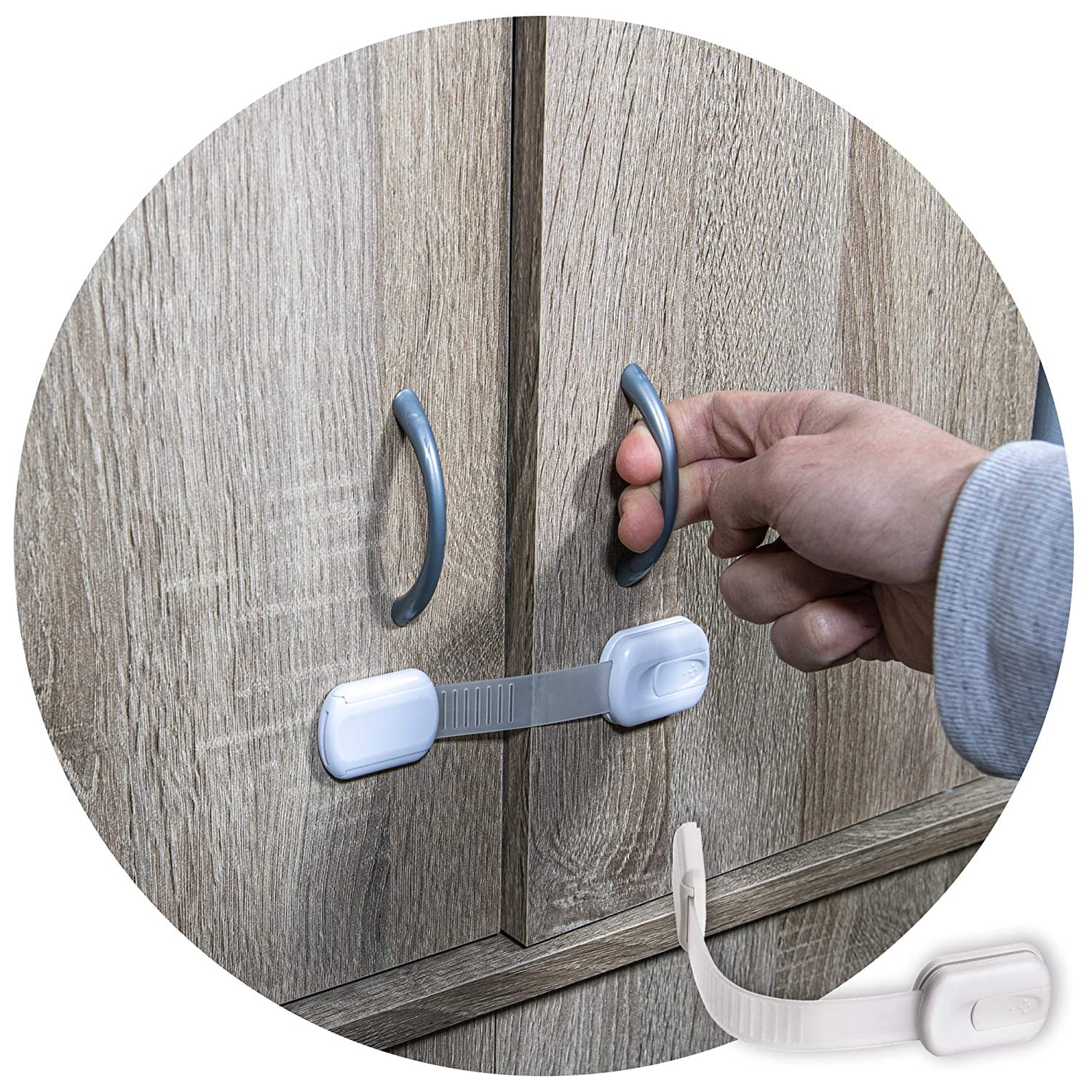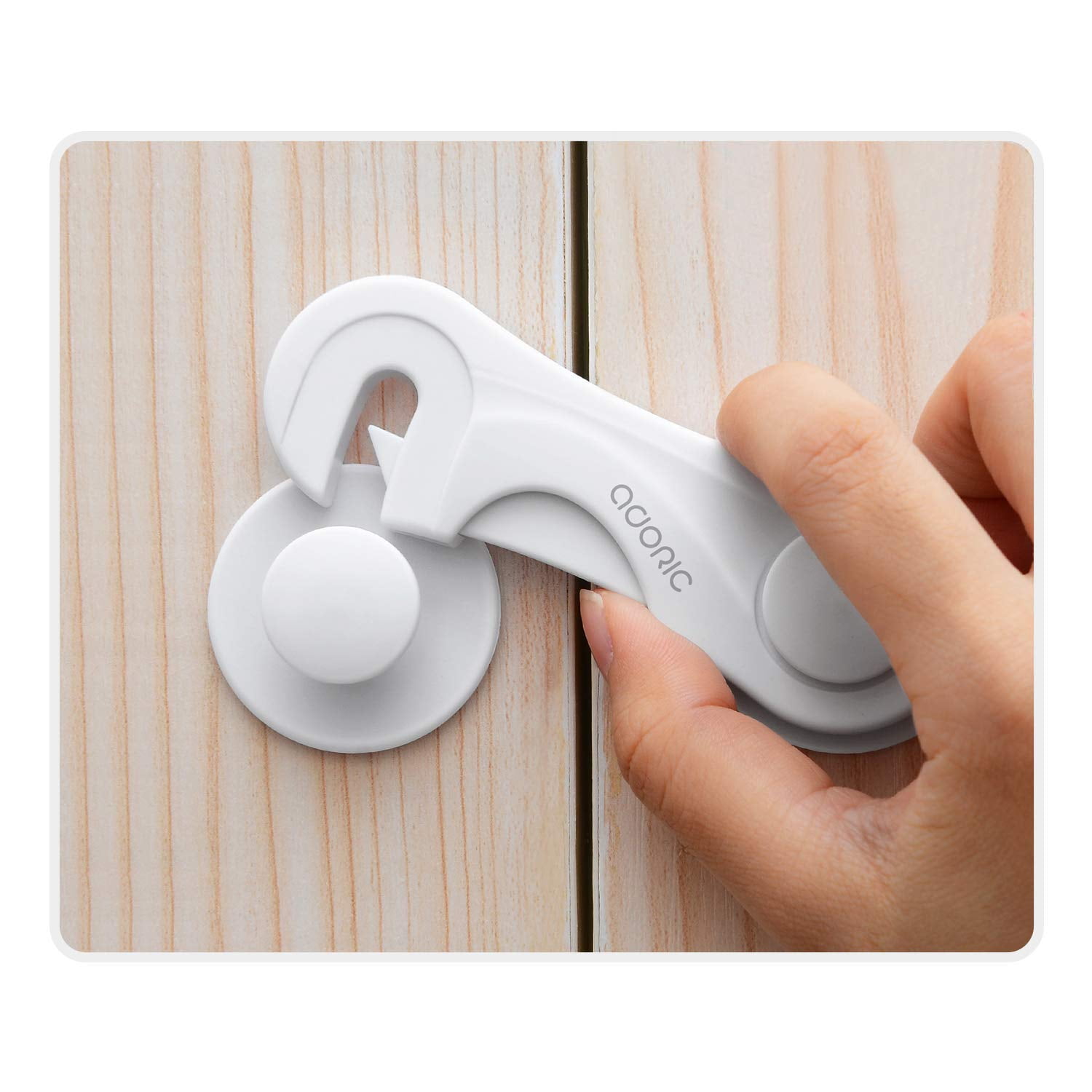Top 5 Best Baby Proof Cabinet Locks
Parents, your journey into the wonderful world of baby-proofing is a marathon, not a sprint. It’s about creating a safe haven for your little explorer, allowing them the freedom to grow and learn while mitigating risks. Cabinet locks are a crucial part of this process, and choosing the right ones can save you considerable stress and potential accidents. Let’s dive into a comparative review of five top contenders, empowering you to make the best choice for your family.
Top 5 Baby Proof Cabinet Locks: A Comparative Review
Choosing the right cabinet lock can feel overwhelming. The market is saturated with options, each promising safety and ease of use. This table summarizes the key features, advantages, and drawbacks of five highly-rated locks to aid your decision-making.
| Brand | Features | Pros | Cons |
|---|---|---|---|
| Safety 1st Magnetic Cabinet Locks | Strong magnets, easy installation, child-resistant | Simple to use, strong hold, affordable | Magnets can be dislodged with enough force, may not fit all cabinets |
| Munchkin XtraGuard Multi-Use Locks | Adhesive mounting, adjustable straps, versatile | Suitable for various surfaces, strong adhesive, easy adjustment | Adhesive may not work on all surfaces, straps can be fiddly |
| Baby Einstein Super Strong Magnetic Locks | High-strength magnets, sleek design, multiple lock styles available | Powerful hold, attractive appearance, various options for different cabinets | Installation may require precise placement, potentially more expensive than other options |
| IKEA ANTILOP Baby Safety Strap | Simple strap design, adjustable length, no tools required | Extremely affordable, easy installation, durable | Less secure than magnetic or latch locks, may not suit all cabinet styles |
| Child Safety Locks with Adjustable Straps | Adjustable straps, strong adhesive, easy installation | Versatile, suitable for various cabinets and drawers, affordable | Adhesive strength may degrade over time, straps can loosen over time |
Safety 1st Magnetic Cabinet Locks: Detailed Review
Safety 1st Magnetic Cabinet Locks are a popular choice due to their simplicity and effectiveness. These locks utilize strong magnets to secure cabinets, requiring a simple push-button release mechanism for adults. The design is sleek and unobtrusive, blending seamlessly with most kitchen aesthetics. The material is primarily durable plastic, making them easy to clean. Installation typically involves attaching two parts, one to the cabinet door and one to the cabinet frame, using strong adhesive. The magnetic connection ensures a secure hold, preventing little hands from accessing dangerous contents. However, persistent toddlers might eventually learn to dislodge the magnets with enough force.
Munchkin XtraGuard Multi-Use Locks: Detailed Review
The Munchkin XtraGuard Multi-Use Locks stand out for their versatility. Employing adjustable straps and a strong adhesive, they can be used on a variety of surfaces, not just cabinets. The straps allow for a customized fit on different sized doors and drawers. The locking mechanism is a simple, secure buckle, easy for adults to operate but challenging for children. The durable plastic construction is both practical and aesthetically pleasing. However, the adhesive may not be suitable for all surfaces, and the straps can sometimes be fiddly to adjust, potentially causing frustration during installation.
Installation Process Illustration: Safety 1st Magnetic Cabinet Locks
Imagine a simple diagram showing two magnetic pieces. Step 1: Clean the cabinet surfaces thoroughly with a degreaser. Step 2: Peel the adhesive backing off one magnetic piece. Step 3: Firmly press the magnetic piece onto the inside of the cabinet door, ensuring it’s aligned correctly. Step 4: Repeat for the second magnetic piece on the cabinet frame, aligning it with the first piece. Step 5: Press firmly for several seconds to ensure a strong adhesive bond. Allow the adhesive to fully set before testing the lock. The diagram would visually depict these steps, making the installation process clear and concise.
Addressing Common Baby Proofing Challenges with Cabinet Locks

Parents, you’ve chosen the best baby proof cabinet locks, but the journey doesn’t end with the purchase. Successful baby proofing requires understanding and overcoming common installation and usage hurdles. Let’s equip you with the knowledge to conquer these challenges and create a truly safe haven for your little one.
Best baby proof cabinet locks – Installing and using cabinet locks can present unexpected obstacles. From sticky drawers to doors that refuse to cooperate, these seemingly minor issues can significantly impact the effectiveness of your safety measures. Remember, perseverance is key – a little ingenuity can go a long way in ensuring your child’s safety.
Troubleshooting Installation Issues
Many common installation problems stem from improper preparation or choosing the wrong type of lock for the specific cabinet. Addressing these issues proactively can save you time and frustration.
- Sticky Drawers or Doors: Before applying any lock, thoroughly clean the cabinet surface with a degreaser to remove any residue that might prevent the lock from adhering properly. Allow the surface to dry completely before installation. For particularly stubborn stickiness, consider using a rubbing alcohol solution.
- Locks Not Closing Properly: Ensure the lock is correctly aligned and firmly attached. If using adhesive locks, apply even pressure for the recommended time to ensure a strong bond. For magnetic locks, check that the magnetic components are properly aligned and close enough for effective engagement. Sometimes slight adjustments in the placement of the lock components are necessary.
- Improper Lock Selection: Different lock types are suitable for different cabinet materials. Adhesive locks work best on smooth, flat surfaces like wood or metal, while magnetic locks are ideal for cabinets that require a less permanent solution or those with existing hardware. For glass cabinets, consider specialized suction cup locks or locks designed for glass.
Choosing the Right Cabinet Lock Type
The market offers a variety of cabinet locks, each with its own strengths and weaknesses. Choosing the right type for your specific needs is paramount.
- Adhesive Locks: These are easy to install and are suitable for most cabinets made of wood, metal, or laminate. However, they might not be suitable for frequently used cabinets or those that experience significant temperature fluctuations. Their adhesive bond may weaken over time, necessitating replacement.
- Magnetic Locks: These offer a more discreet and easily removable solution. They are generally suitable for a variety of cabinet materials but require precise alignment for optimal functionality. Their strength can be affected by the thickness of the cabinet door.
- Strap Locks: These are more robust and often used for larger cabinets or drawers. They usually involve a strap that wraps around the cabinet and secures with a latch or buckle. They are less discreet but offer greater security.
- Push-Button Locks: These require a simple push of a button to open or close. They are typically easier for adults to operate and are less likely to be tampered with by children than other types. They are often suitable for a variety of cabinet types.
Safety Tips for Cabinet Lock Usage, Best baby proof cabinet locks
Beyond proper installation, consistent vigilance and adherence to safety protocols are essential. These tips can help reinforce your baby proofing efforts.
- Regular Inspection: Regularly inspect all cabinet locks to ensure they remain securely fastened and functioning correctly. Replace worn or damaged locks promptly.
- Adult Supervision: Never leave your child unattended near cabinets containing potentially hazardous materials, regardless of whether locks are in place.
- Child-Resistant Packaging: Store cleaning products and other hazardous materials in their original child-resistant packaging, even when secured with cabinet locks.
- Out-of-Reach Storage: For ultimate safety, store hazardous materials in high cabinets or areas completely inaccessible to children, supplementing this with locks as an extra precaution.
- Teach Older Siblings: If you have older children, teach them the importance of keeping cabinets locked and the potential dangers of accessing hazardous materials.
Beyond Cabinet Locks

Parents, securing your home for your little one isn’t just about cabinet locks; it’s about creating a safe haven where they can explore and grow without unnecessary risks. Think of it as building a fortress of protection, one smart choice at a time. Cabinet locks are a fantastic start, but they’re just one piece of the puzzle.
Beyond the kitchen cabinets, a whole world of potential hazards awaits. We’re talking about those sneaky electrical outlets, sharp corners, and tempting staircases. To truly baby-proof your home, we need a comprehensive strategy. This isn’t about creating a sterile environment, but a safe and stimulating space for your child to thrive.
Additional Safety Measures
Expanding your childproofing efforts beyond cabinet locks is crucial. Think of it as layering your protection – multiple safeguards working together to minimize risks. Several key areas demand attention: outlet covers prevent curious fingers from exploring electrical currents; corner protectors cushion sharp edges on furniture, reducing the risk of bumps and bruises; and child gates provide a barrier to dangerous areas like staircases. These simple additions, combined with cabinet locks, form a robust defense system.
Assessing and Prioritizing Home Safety
Prioritizing areas needing baby-proofing is key. Don’t try to tackle everything at once; instead, focus on the highest-risk areas first. Here’s a systematic approach:
- Kitchen: This is a high-traffic area with numerous hazards like cabinets, sharp utensils, cleaning supplies, and hot appliances. Prioritize securing cabinets containing cleaning products and sharp objects first.
- Bathroom: This area contains hazardous chemicals, hot water, and slippery surfaces. Secure cleaning supplies, medicine cabinets, and install anti-scald devices on faucets.
- Living Room: Focus on securing electrical outlets, covering sharp corners on furniture, and anchoring heavy objects like bookshelves or TVs. If there’s a fireplace, install a safety screen.
- Bedrooms: Secure any potentially hazardous items like medication or cleaning supplies. Consider anchoring dressers to the wall to prevent tipping.
- Stairways: Install sturdy gates at the top and bottom of all staircases. This is a crucial step to prevent falls.
Remember, a methodical approach is key. Tackle one room at a time, focusing on the most significant hazards. This makes the task less overwhelming and ensures you’re consistently building a safer environment.
Simplified Baby Proofing Guide
[Let’s assume the original article contained complex technical terms and jargon. Here’s a simplified version:]
“Keeping your baby safe at home doesn’t have to be complicated. Start by thinking about where your baby might get into trouble. Are there any dangerous chemicals within reach? Are there sharp corners on furniture? Are there things that could fall and hurt your baby? Once you’ve identified these areas, you can take steps to make them safer. For example, you can use locks on cabinets to keep your baby from reaching cleaning supplies or medications. You can also use corner protectors to soften sharp edges. Childproof outlet covers prevent your baby from sticking things into electrical outlets. Baby gates can keep your baby away from stairs. Remember, childproofing is about creating a safe environment, not a sterile one. Your baby needs to explore and learn. Childproofing is about reducing risks, not eliminating them completely.”
